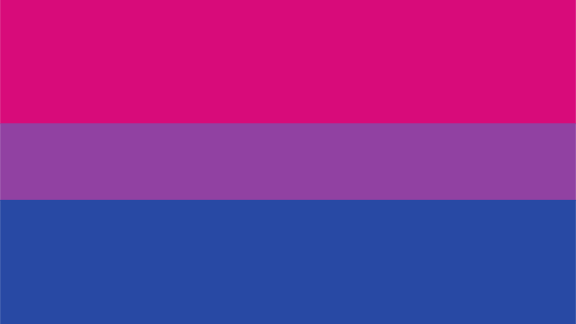Bisexuality is defined as the attraction to more than one gender. A bisexual person may feel equally attracted to multiple genders or they may feel more attracted to one gender. These feelings may change over time, and that is completely ok. Being bisexual can be a confusing and isolating experience, as bisexual people can often experience stigma, exclusion and discrimination from heterosexuals and even from people within the LGBTQ+ community. This is called Biphobia, and it refers to the discrimination against those who identify with the bisexual community.
To celebrate Bisexuality Visibility Day, here are some important reminders about what it really means to be bisexual today:
You don't have to tell anyone about your sexual history to prove you're bisexual.
You don't even have to have sexual experience with different genders to be bisexual. You just are.
The “bi-” in bisexual isn’t what you think
Bisexuality is not just about being attracted to only two genders - male and female. It can mean you are attracted to more than one gender, including other genders like non-binary, trans and gender fluid.
Bisexuality is not about one or the other, or both.
Lots of bisexual people have a preference for one gender. Others have preferences for more than one gender. It’s all normal. Your bisexuality is valid no matter how you experience it.
You aren't defined by your partner's gender.
Your sexual identity is not based on who you're dating. It's about who you're attracted to - romantically, sexually, physically, emotionally or otherwise.
You can feel different types of attraction to different genders.
This can include sexual, physical and/or romantic attraction. Don't be afraid to explore your feelings by talking to friends, family or trusted partners. Even if you’re not sure what you're feeling, that's okay too.
Being bisexual does not mean that a person desires more than one sexual partner at a time.
One example of biphobia is when bisexuals are labeled as being ‘promiscuous’ because of their attraction to more than one gender. But no matter your sexual orientation, it has absolutely nothing to do with how many sexual partners you have, or how often you have sex.
You are still bisexual even if you don’t feel bisexual or queer enough to be part of the LGBTQ+ community.
That’s actually a very bisexual thing to feel (but it shouldn’t be!) Bisexuals are often seen as not ‘queer enough’ or seen as ‘half straight’ or ‘half gay’. This is not true, and is another example of biphobia. Bisexual people are valid and deserve to be fully embraced by the LGBTQ+ community.
Bisexual people often come out later in life or not at all
Bisexual people are significantly less likely to be out with friends and family about their orientation - according to Stonewall, only 36% of bisexuals come out to their friends, compared to 74% of gay or lesbian people. Every LGBTQ+ person deserves the right to come out when, how and who they want to. To be a good ally you should familiarize yourself with the different sexual idenity terminology and the different challenges each LGBTQ+ person may face.
Bisexuality and Pansexuality can be used interchangeably
Some people consider the term “bisexual” to be non-inclusive and prefer the term “pansexual.” Pansexuality is described as attraction to all genders, therefore including trans, non-binary and gender fluid people. Similarly, bisexual people are also attracted to other genders outside the binary of male and female. Gender and sexual orientations evolve and so should their definitions.
Remember: the B in LGBTQ+ is just as valid and beautiful as every other sexual orientation.
Further Reading:
Resource Guide to Coming Out as Bisexual - Human Rights Campaign (hrc.org)
when
Subject
LGBTI+








